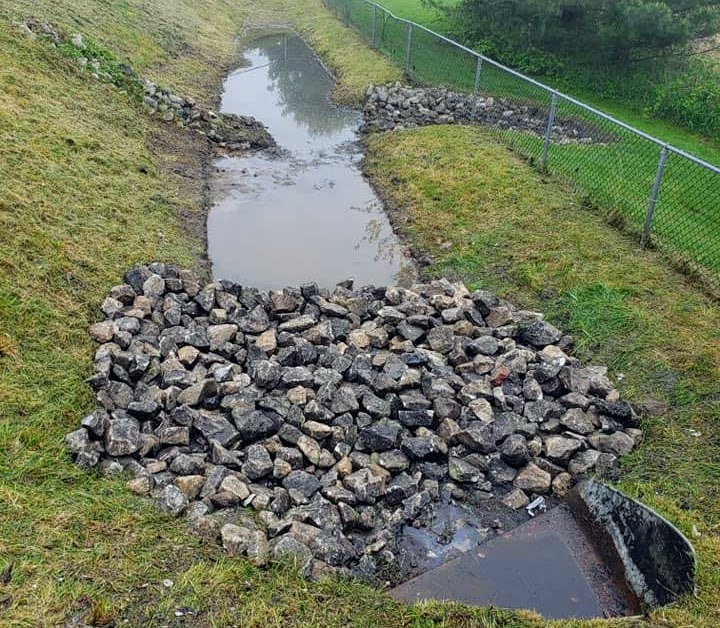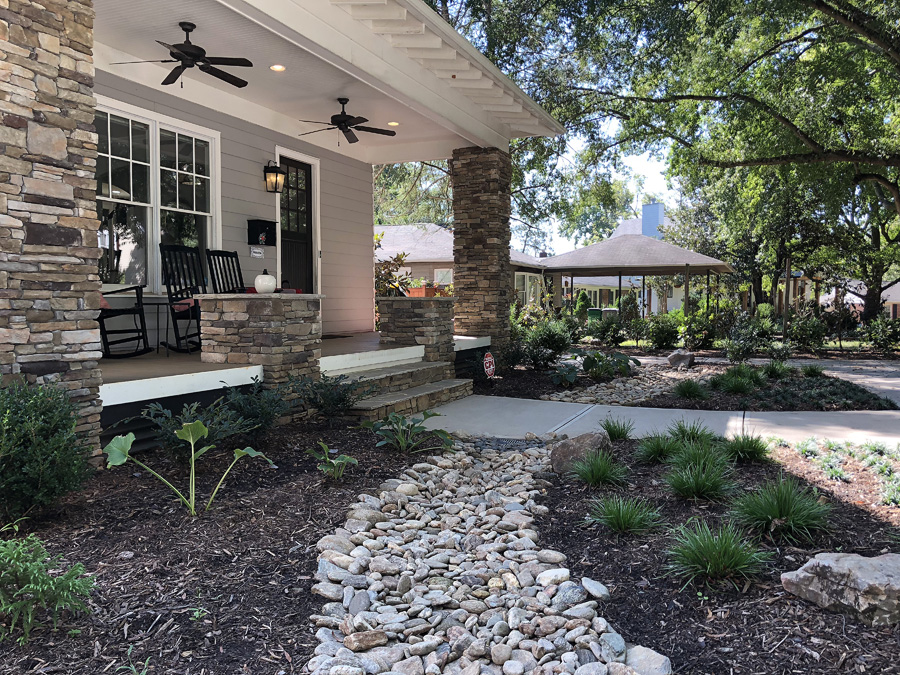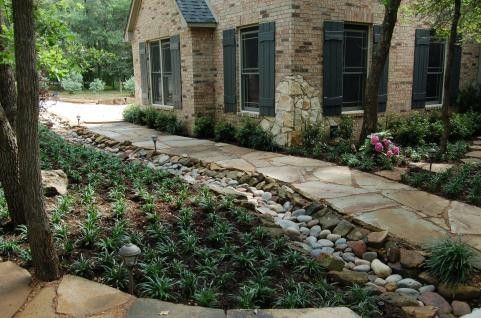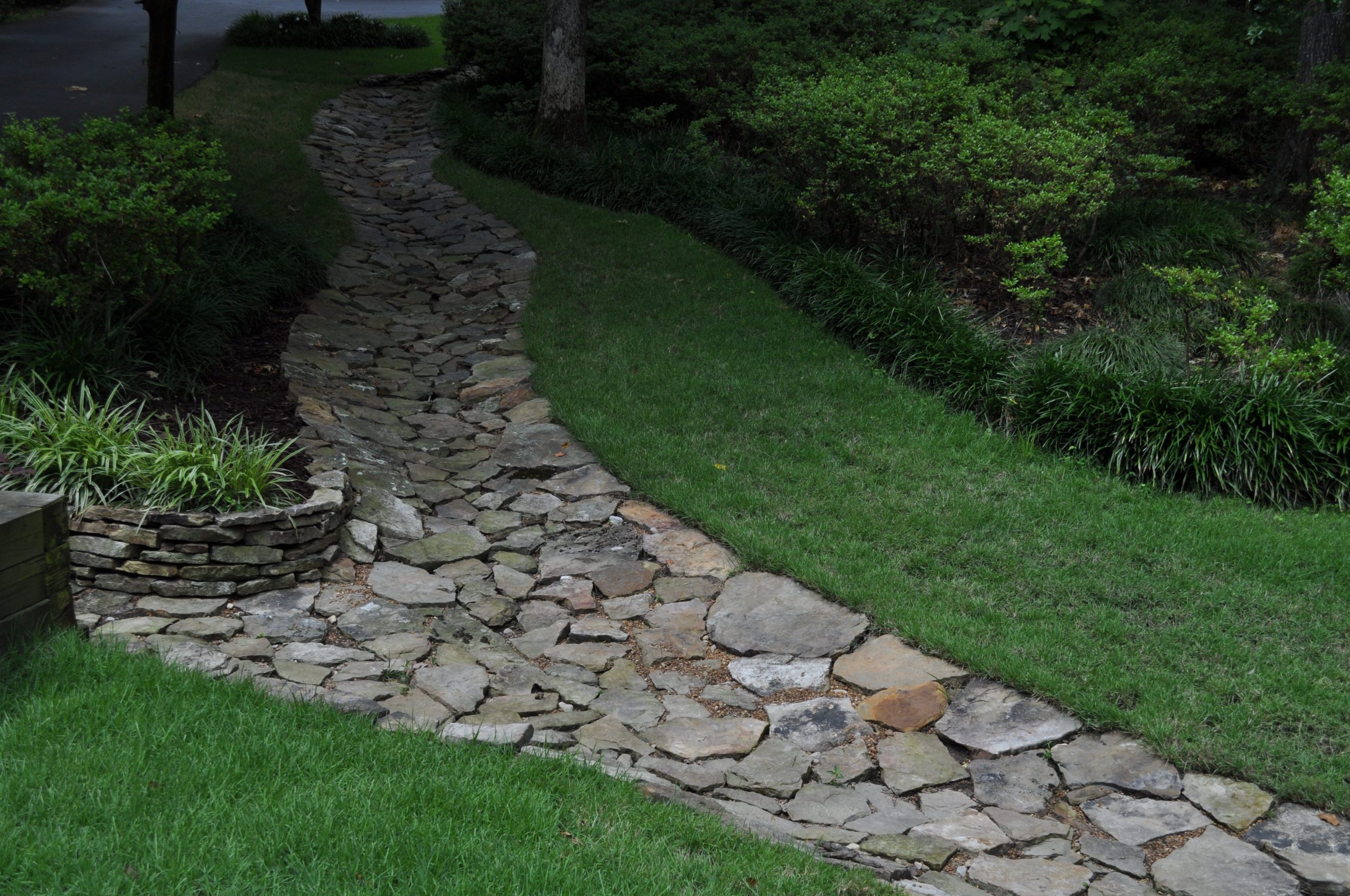Drainage

Drainage systems are designed to remove excess water from areas around your property. We can design your system(s) to help direct water flow away from walkways, driveways, buildings and roofs to avoid flooding. Residential and commercial drainage systems are very important as they prevent rotting, mold, mildew, and structural damage in buildings from a buildup of water. They also can improve conditions in lawns and other outdoor spaces.
Types of Residential Drainage Systems
There are four main types of residential drainage systems:
Surface Drainage System
Surface drainage uses swales to direct the water runoff into channels. These channels are usually dug in a parallel pattern. They are shallow ditches that will act as canals directing water into the main drain or away from the home to avoid water pooling or flooding. Surface drains are an absolute must if the area is flat since water pooling could potentially cause problems in an area that has a lot of precipitation. This can be done around buildings, walkways or driveways to prevent water from collecting around your home and possibly into your foundation or basement area.
Subsurface Drainage System
Subsurface drains are one of the best ways to direct water away from your roof and around the house and out of sight. The French Drain is one type of Subsurface system. Most often it is tied to the downspouts from the roof and runs underground using a slope to direct the water away. For very flat properties, a deep well may be dug and filled with stones to collect the water and have it absorbed into the ground naturally. Another method for a subsurface drain will use a ditch with pipes used to carry the water away. This type of drainage will keep unsightly pipes hidden underground and may have multiple sources of water leading into it. Often an access drain or opening will be needed to maintain open and clear pipes.
Slope Drainage System
Slope drains use naturally occuring property features to direct water away from the structure and may require the additional use of pipes to have water flow down a slope. A pipe is installed and then anchored into a small incline where the water will follow gravity through the pipe and away from the structure. For most drains the pipe will be plastic or pvc. If the drain is large, we may use metal, steel or concrete. These drains will be covered with a sturdy grate to keep people and animals from falling into it.
Downspout and Gutter System
In the Mid-Atlantic area, almost every home requires the use of a gutter system to drain water from the roof. The roof gutter is used to collect rain water from the roof and should be connected to a downspout, drawing the water to the ground. At the bottom of the downspout, an extension can be installed for further direct water to flow away from the building. The extension can be buried and connected to pipes flowing away from the building. Most downspouts will empty out on a slope so the water will not pool at the base of the downspout. Once installed, the drainage will allow basements to dry out, keep water from pooling near the house and prevent erosion of your topsoil and lawn.
The Importance of Having A Drainage System in Place
If you invest your life savings in your home, it’s important to keep your investment and home in top condition. Let Chesapeake Landscapes protect your investment! Do not let poor drainage and erosion damage either the exterior OR interior of your home. Standing water will promote the growth of mold and mildew and allow your home structure to rot. Even flooding inside your basement may be caused by poor drainage. When you contact Chesapeake Landscapes you will meet with our expert drainage personnel. They will review the flooding, standing water, and damage to your home from poor drainage. Installing a drainage system or multiple systems around your property may well be the best home improvement you can purchase to protect and maintain the beauty of your property.



The sustainable approach is cost-effective and environmentally appealing. It can address erosion issues, water pollution reduction, combined with management of sewer overflows and other stormwater runoff solutions while adding beauty to your property.
Permeable Paving
Driveway and patio pavers may be a choice you make to beautify your home, however, it can also be a significant way to manage water runoff and erosion. Chesapeake Landscapes uses permeable pavers and paving methods to address the removal and drainage of water from the areas around your home. It allows the runoff from roofs, sidewalks, patios, and driveways to seep into the ground, rather than collect and erode your gardens. To do this, we create a subsurface to your patio or driveway using gravel and pipes direct the water away from your structures and gardens. This is what we do, we keep up with environmental concerns, individual homeowner needs, and innovative solutions for your landscaping needs.
